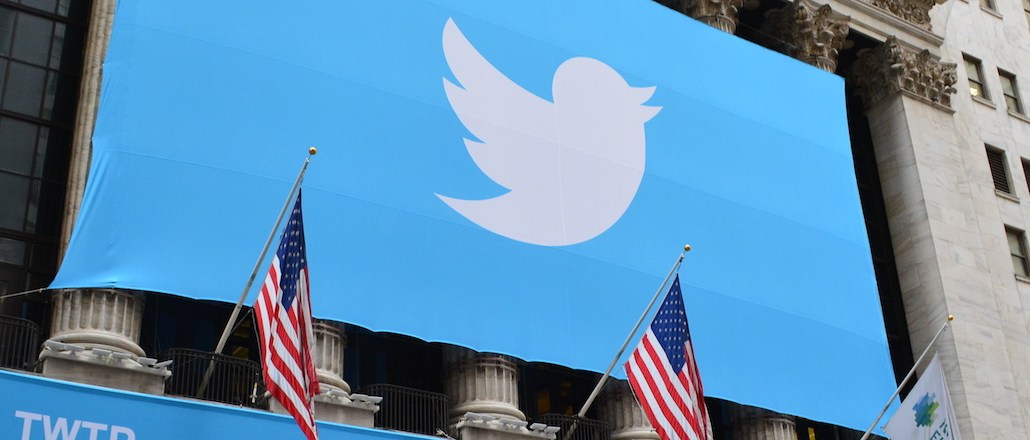The Trump bump: Twitter is getting a second look from brands

Twitter’s woes are far from over, but President Donald Trump may have breathed new life into the flailing platform.
Trump is a master at the art of the headline-grabbing, logic-defying, truth-stretching tweet, an unprecedented feature of his successful campaign for president. In recent months, he has taken to Twitter to defend his business interests, mock his competitors and even praise or call brands out — bringing back attention to a platform that has been increasingly sidelined by marketers recently.
Now, suddenly, Twitter has never been more influential, according to Wharton professor of legal studies and business ethics Kevin Werbach. “It is fairly evident that Twitter played a significant role in this presidential election,” he said. “That’s an extraordinary level of influence for any social or tech platform.”
Trump’s tweets have caused so much buzz around Twitter that “the platform is becoming relevant again,” said Katie Burkhart, associate director of digital media at Empower MediaMarketing. “Lapsed users are getting back on Twitter just to check out what President Trump is saying.”
But civilians aren’t the only ones paying attention. At least four media agency executives interviewed for this article confirmed that Trump’s frenetic activity on the platform during and after the Presidential race has brought renewed attention to it from their clients.
According to one media agency executive who did not wish to be named, at least 10 percent of the agency’s clients have inquired about Twitter in the past one month. That may not seem like much, but it is “10 percent more than it has been over the past 18 months.”
Not surprising, said Ben Kunz, svp of marketing and content at Mediassociates. “What once was a conversation between an agency and a marketer about ‘Yeah, we could consider Twitter, but it’s sort of the second-rate social network,’ is now ‘Yeah, we need to be on Twitter, because that is where news is happening,’” he said.
But while the election may have helped make Twitter more top-of-mind for marketers, they aren’t necessarily putting their money there — at least not yet. Trump may attract the eyeballs, but he is still a highly polarizing figure. His recent outbursts have flared up around New Balance, Boeing and L.L. Bean just in the past couple months. And it’s not just Trump: Dippin’ Dots, the ice cream of the future, recently mixed it up with his new press secretary.
“The current political environment has provided opportunities for brands to engage in current and relevant topics, but it has also raised a lot of concerns about brand safety,” said Mica Ness, partner and group director of search and social at Mindshare North America. “Before moving forward, brands need to decide if it’s a conversation they want to surround.”
Still, while Twitter has seen some revenue growth, it has also had to cut jobs and products to keep up with shareholder expectations around profitability. It has also been bogged down by a plateauing user base, concerns over trolling and harassment and ad offerings that pale in comparison to its competitors, said Kunz.
“The best media plans have forecasts that go all the way through to the results,” he said. “And anyone with marketing acumen will dig into Twitter’s performance element and find that the hard reality is that it doesn’t drive cost-per-action on the back-end and does not have nuanced targeting on the front-end.”
Advertisers aren’t stupid. They’ll spend money where they see the best return. So while the increased awareness might help Twitter remain in the consideration set for marketing dollars, it’s not necessarily enough to right Twitter’s ship, said Ryan Pitylak, CEO of MDC’s Unique Influence.
In other words, Twitter needs to find its focus and continue to improve on ad unit innovation and data integrations to actually drive success.
“The biggest opportunity — and challenge — that Twitter faces this year is to somehow convert this broad awareness into repeat use, much like the challenge marketers face,” said Craig Atkinson, chief investment officer at Omnicom’s PHD.
More in Marketing

The Disney-OpenAI deal and generative AI copyright concerns
This week’s Digiday Podcast delves into the copyright concerns and potential trademark issues surrounding brands’ use of generative AI tools, with Davis Wright Tremaine partner Rob Driscoll.

‘There’s tremendous opportunity’: NBA sponsorships lead on European expansion
David Brody, vp, global partner management group lead at the NBA, explains its pitch to sponsor brands and how expansion isn’t far off.

New partnerships, marketing fuel BNPL’s holiday surge
This holiday season, more brands deployed BNPL services with different payment options beyond the more familiar “pay-in-four” structure.







